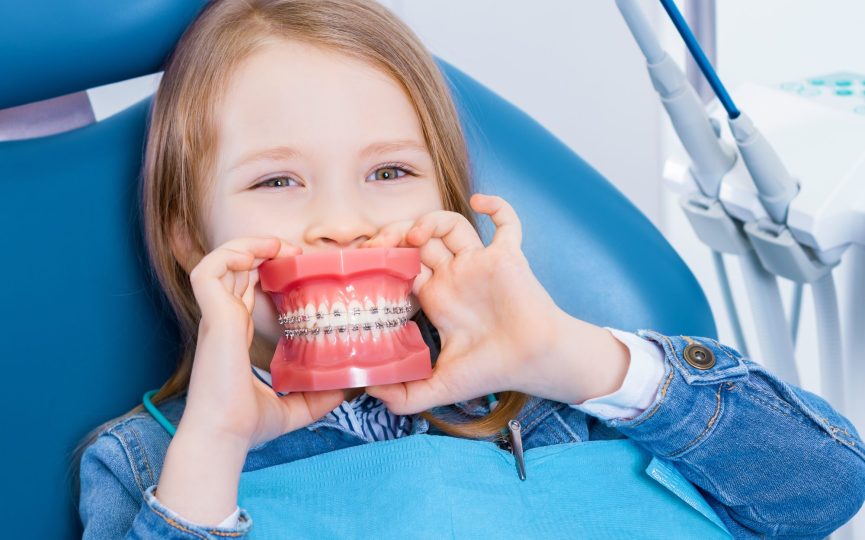At What Age Should Your Child See an Orthodontist?

July 28, 2024
At What Age Should Your Child See an Orthodontist?
Deciding when your child should first see an orthodontist can be a daunting task for many parents. It’s understandable to have concerns about the right timing and the potential need for braces or other orthodontic treatments. Fortunately, with the guidance of knowledgeable dental professionals at Munster Distinctive Dentistry and Westville Distinctive Dentistry, you can make an informed decision regarding your child’s orthodontic needs.
The Right Time for an Orthodontic Consultation
Orthodontic issues rarely resolve on their own and early detection can make a significant difference in treatment outcomes. The American Association of Orthodontists (AAO) recommends that children should have their first orthodontic screening by the age of 7. By this age, most children have enough permanent teeth for an orthodontist to identify potential problems. Early diagnosis can prevent more serious issues down the road and can guide the growth of facial and jaw bones into a healthier pattern.
Signs Your Child May Need Orthodontic Care
Recognizing the signs that your child might need orthodontic attention is critical. Here are several key indicators that parents should look out for:
Underbites and Overbites
An underbite occurs when the lower front teeth are ahead of the upper front teeth, while an overbite is characterized by the upper front teeth significantly overlapping the lower front teeth. Both conditions can affect chewing and speaking, and may require orthodontic intervention.
Crossbites and Functional Shifts
A crossbite happens when the upper teeth fall inside the lower teeth when biting down. A functional shift, where the jaw shifts to one side as the teeth come together, can also indicate a need for orthodontic care. These issues can lead to uneven wear on teeth and jaw strain.
Crowded or Spaced Teeth
Very crowded teeth can make it difficult to maintain good oral hygiene, leading to tooth decay and gum disease. On the other hand, excessively spaced teeth might indicate underlying developmental issues. Both conditions can benefit from early orthodontic assessment.
Abnormal Teeth Meeting Patterns
Teeth that meet abnormally or do not meet at all can cause a range of functional issues. Orthodontists can help realign teeth and jaws to ensure they meet properly.
Thumb-Sucking and Other Habits
Persistent thumb-, finger-, or pacifier-sucking habits can affect teeth and jaw growth. If these habits continue beyond the toddler years, they can lead to misaligned teeth and require orthodontic attention.
The Benefits of Early Intervention
Early orthodontic intervention can manage these issues effectively. For example, guiding the growth of facial and jaw bones into a better pattern can provide more space for incoming permanent teeth. It can also help create a balanced and symmetrical appearance.
Our team utilizes advanced technology such as CEREC for same-day crowns and on-site CT 3D technology for superior radiography. This ensures precise diagnostics and effective treatment planning.
Call Our Dentists to Learn More About Our Orthodontic Services
Determining the right time for your child to see an orthodontist is crucial for their long-term oral health. At Munster Distinctive Dentistry and Westville Distinctive Dentistry, we are here to support your child’s dental health journey with compassionate care and expertise. Contact us to schedule an appointment and take the first step towards a healthier smile for your child.

Get In Touch
"*" indicates required fields





